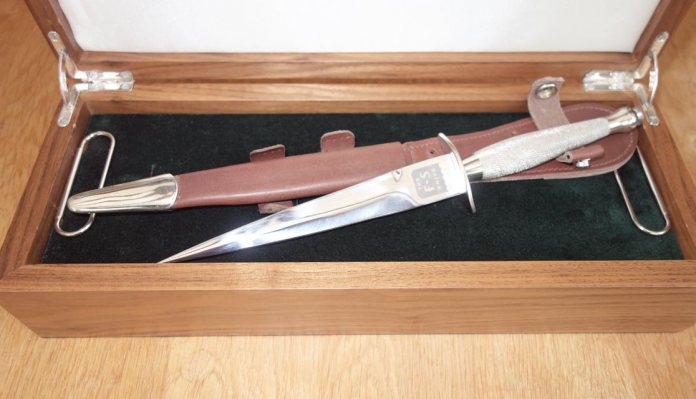Fairbairn- Sykes Commando Knife
- By Graham Allen
-
7
 Comments
Comments
- Last updated: 17/03/2017

In June of 1940, things in England looked pretty bleak! We’d just managed to rescue as many men as we could from the beaches of Dunkirk during Operation Dynamo and it’s fair to say that we did it by the skin of our teeth. Winston Churchill was determined to take the fight back to the Germans however and the end result was the formation of the Commandos. He said: “There ought to be at least 20,000 Storm Troops or ‘Leopards’ drawn from existing units, ready to spring at the throats of any small landings or descents.” These troops were drawn from various units and were trained and equipped with the standard weapons of the day but were essentially able to choose as much firepower as they could carry.
A decent fighting knife was an essential item and the Fairbairn-Sykes Commando Knife has to be one of the most iconic knives of all time! It was designed by William Ewart Fairbairn and Eric Anthony Sykes, who said: “There are two important factors to bear in mind: balance and keenness. The hilt should fit easily in your hand, and the blade should not be so heavy that it tends to drag the hilt from your fingers in a loose grip. It is essential that the blade have a sharp stabbing point and good cutting edges, because an artery torn through (as against a clean cut) tends to contract and stop the bleeding. If a main artery is cleanly severed, the wounded man will quickly lose consciousness and die.” In peacetime this may sound rather gruesome, but this was war! The pair had recently returned from the Shanghai Riot Police to train Commandos and they knew a thing or two about hand-to-hand combat. Wilkinson Sword made the first batch of knives, with much of the work carried out by hand.
There were three patterns made during the war, the ‘1st Pattern’ had a 6½-inch blade with a flat area (called a ricasso) near the S-shaped guard and a knurled, solid brass handle. The ‘2nd Pattern’ had a 7-inch blade with a flat guard and follow handle. The ‘3rd Pattern’ had the 7-inch blade and a black painted, cast alloy handle to speed up production and looked like a series of rings stacked on top of each other; brass was better employed making cartridge cases!
Their knife later went on to become synonymous with the Royal Marines Commando and the Special Air Service (SAS) They were made in vast numbers and are still made to this day by Joseph Rodgers of Sheffield.
The example here is the presentation model with a hand ground, mirror polished, 7-inches long, carbon steel blade, nickel plated mild steel S-shaped guard and a nickel-plated, knurled brass handle. ‘Joseph Rodgers, Sheffield, England’ is etched on one side of the blade and ‘The F-S Knife’ on the other.
This knife is quite clearly a work of art and definitely won’t be used for paunching rabbits! However, as an example of fine English craftsmanship, it is worthy of any knife collection. The craftsmanship is first-rate and it’s great to know that we still have people who can produce work such as this. The mirror polished blade gleams like chrome and it is a joy to handle and admire. A leather sheath is available, as is a handcrafted, velvet-lined walnut presentation case. The case itself is extremely well made from American black walnut, with a burr walnut lid; it’s therefore a perfect accompaniment to the knife. I couldn’t resist buying the knife and case and it now takes pride of place in my collection.
